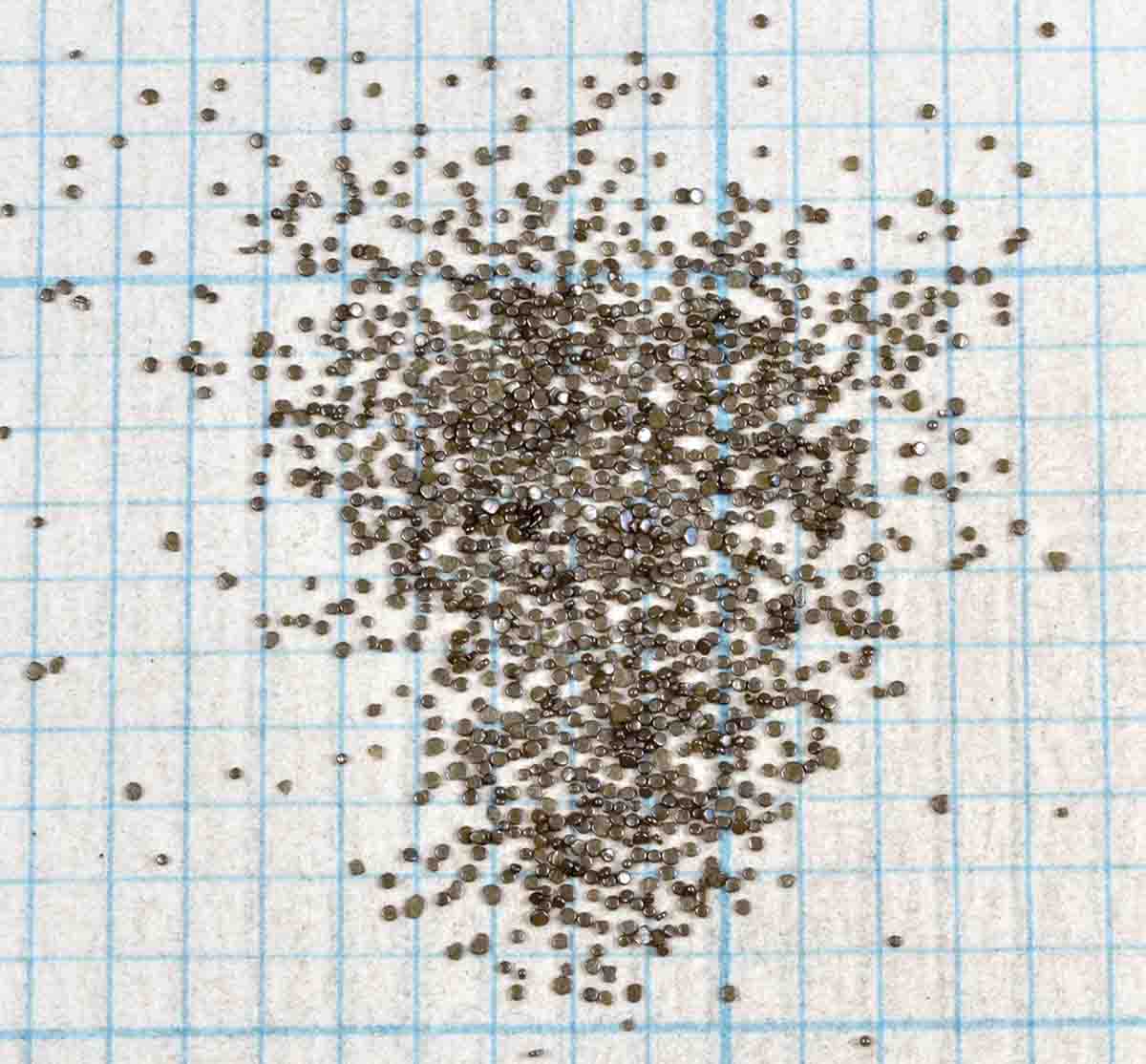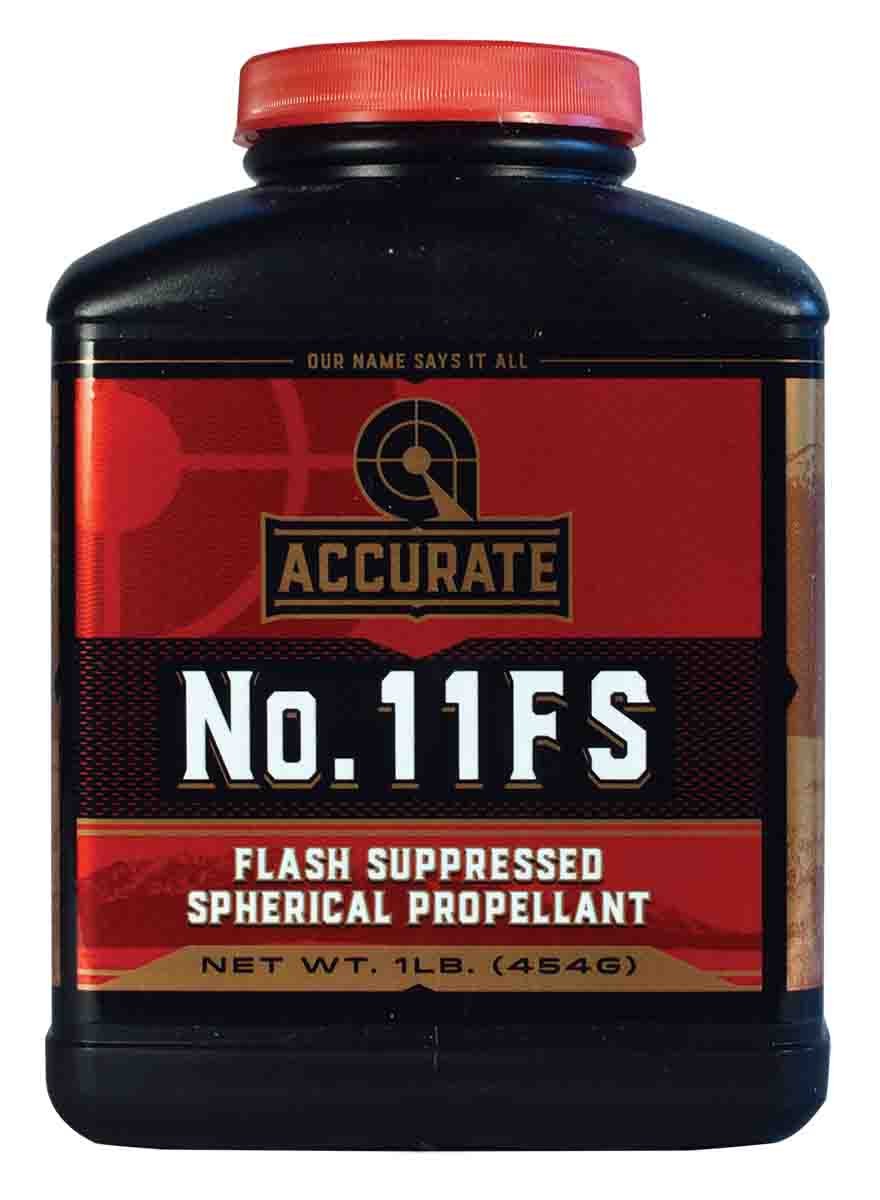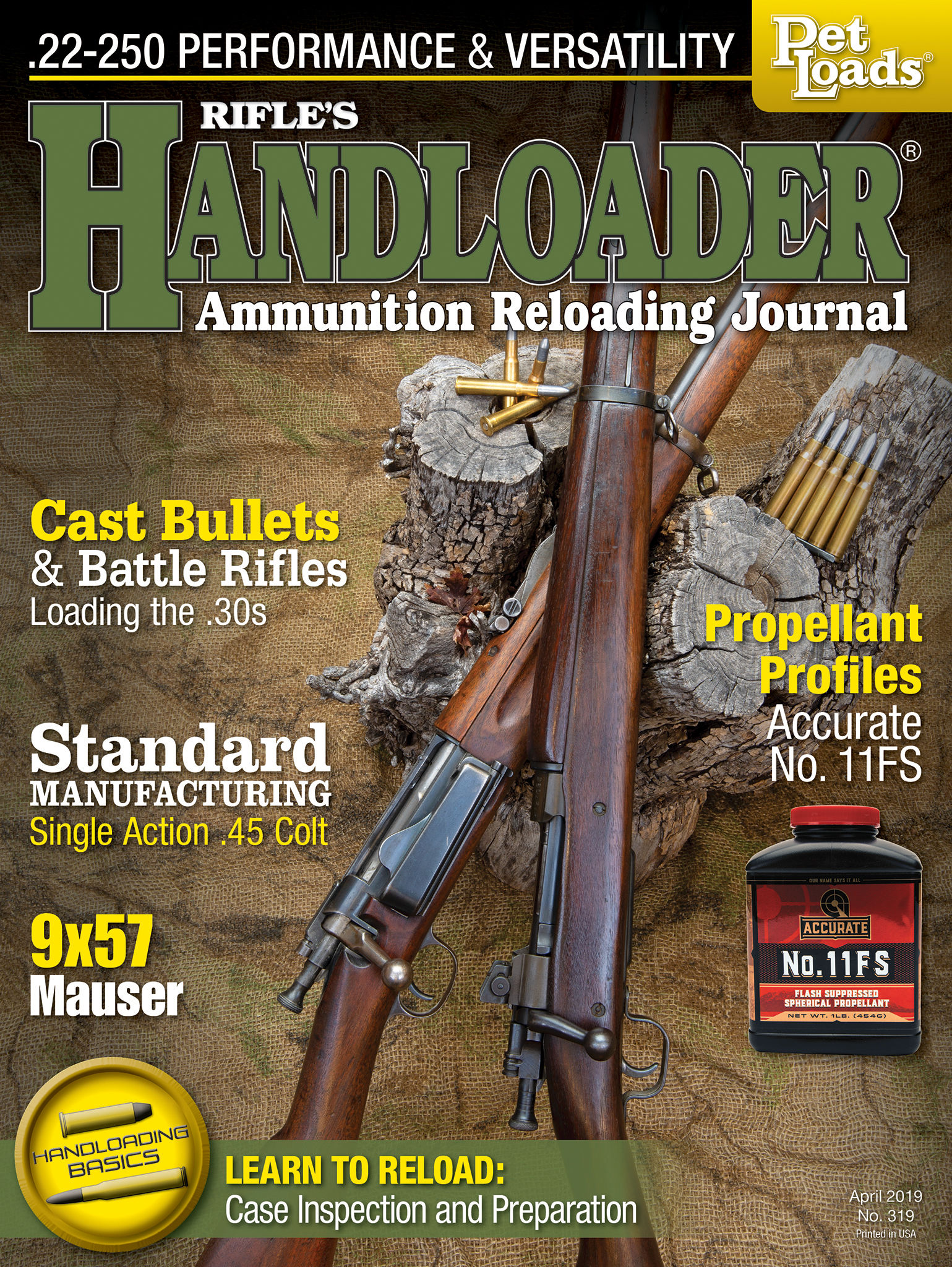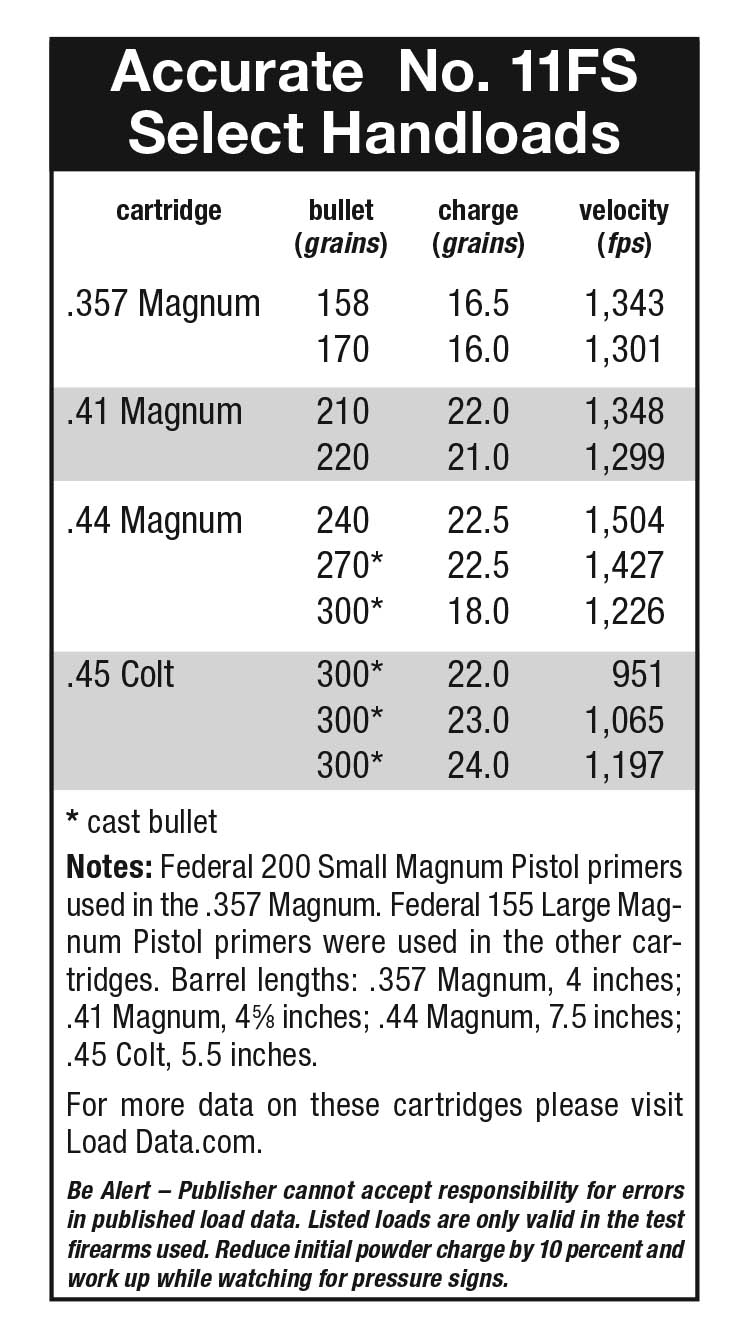Propellant Profiles
Accurate No. 11FS
column By: R.H. VanDenburg, Jr. | April, 19
Western Powders of Miles City, Montana, purveyors of the Ramshot and Accurate lines of smokeless powders, plus Blackhorn, a black powder substitute, and the Montana Extreme line of gun care products, has been busy lately. A few years ago, the company brought its extruded line of Accurate powders closer to home, having them manufactured by the Canadian facility now owned by U.S. defense contractor General Dynamics.
More recently the spherical, double-base Accurate line was also brought home and now is being manufactured in Florida by St.

That really rang a bell. Sometime in the early days of this century, the Olin Corporation, parent company of Winchester Ammunition, decided to divest itself of its powder manufacturing operation. The first step was to establish a separate subsidiary, Primex Technologies, Inc., that would assume manufacture of all powders and sell them on the open market. Coming across the Primex booth at a trade show shortly after its formation, I was given a table of then-available Primex powders. Included in the list was one called SMP297. I was told this was the same as Winchester 296, but with a flash suppressant, and was used primarily in ammunition for law enforcement and other entities where a reduced muzzle flash would be advantageous.
Subsequently, General Dynamics purchased Primex from Olin and renamed it St. Marks Powders. When, in 2005, the Hodgdon Powder Company entered into an agreement with Olin to develop and market Winchester canister powders, it became widely known that the old Hodgdon standby H-110 and W-296 are, in fact, the same powder. In about 2010, the Alliant Powder

Included in the line, referred to as Power Pro, was Power Pro 300-MP. When I asked, I was told Power Pro 300-MP was 297 that had been “tweaked” to produce slightly higher velocities than H-110/W-296. It, too, as far as I can tell, contains no flash suppressant. Now handloaders have three powders that are, at the very least, derived from the same source.
When Western completed its review, WC297 was released under the Accurate label as No. 11FS. So now we have four, but with No. 11FS having 297’s flash suppressant in its composition, hence the suffix FS.
Just for kicks, I decided to compare the four powders. My load consisted of Starline cases, Federal 155 Large Magnum Pistol primers, and a 300-grain cast WFN bullet. The caliber was .45 Colt, and the revolver was an original Ruger Vaquero, somewhat modified, with a 5.5-inch barrel. The load I had developed for the gun was 23.0 grains of H-110 which provided an honest 1,200 fps – at least in warm weather. This time, to avoid any surprises, I reduced the charge to
22.0 grains and loaded five rounds each of W-296, H-110, 300-MP and the new No. 11FS. Keeping in mind each powder represented a different lot, velocity results were: W-296/1,022 fps; H-110/1,096 fps; 300-MP/969 fps; No. 11FS/951 fps. In a previous test with the same components as above, 23.0 grains of H-110 recorded 1,211 fps; 23.0 grains of W-296 produced 1,206 fps and 24.0 grains of 300-MP clocked 1,207 fps.It would appear to me then that 300-MP and No. 11FS are very slightly slower burning than W-296/H-110 and require a slightly heavier powder charge to produce the same velocity. Or to put it another way, because of a slightly flatter time/pressure curve, heavier charges of 300-MP or No. 11FS can be burned and obtain slightly higher velocities at the same pressures. In discussing this with Keith Anderson, Western Powders’ chief ballistician, he allowed I may be right, but in his laboratory tests he didn’t find a statistically sufficient difference in the powders. He, of course, used different cartridges, components and lots of powders. So I will stick with my observations for now, recognizing that the differences are, at best, slight.
No. 11FS, in addition to containing a flash suppressant that incidentally, really works, shares a similar makeup with the other three powders with each having a nitroglycerin content of 10 percent and a bulk density of .950 g/cc. What makes two of the powders apparently slower burning than the other two is unclear, but in the end I have come to like No. 11FS and appreciate its flash-suppressant quality, especially in low-light situations.
The list of applicable cartridges for No. 11FS and the rest is relatively short, ranging from the .22 TCM to the .500 S&W Magnum; mostly big-bore handgun cartridges, of course, and including the .357, .41 and .44 Magnum revolver cartridges as well as the .45 Colt when chambered in stronger-framed guns from Ruger, Freedom Arms and others. There are a few rifle cartridges such as the .22 Hornet, .300 Blackout and .30 Carbine where No. 11FS and the others are useful. There is still published data for the .410 bore shotshell where W-296 and H-110 are listed, and it would appear No. 11FS would also be appropriate, although with newer, more narrowly focused powders such as Alliant’s 410 and Hodgdon’s Lil’Gun, there seems to be little need.
When testing No. 11FS, I limited efforts to four cartridges: the .357, .41 and .44 Magnums and the .45 Colt in my heavy-framed Ruger, although I did try several bullet weights in each of the magnums and several powders charges in the .45 Colt. I was very pleased with the results, obtaining modest extreme spreads although, to be truthful, the heavier bullet weights in each cartridge performed best. This was to be expected, and accuracy was equal to my abilities and each gun’s potential. No matter what is published elsewhere, I must recommend magnum-strength primers without exception.



